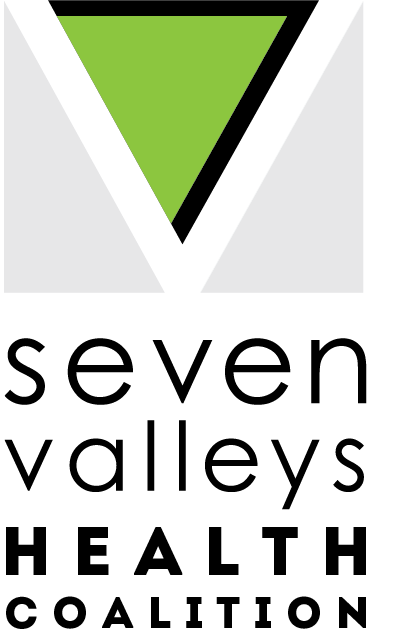The Language of Sustainable Food
Language is the lens through which we form perceptions about the world around us. It’s a powerful tool that shapes consumer purchasing behavior too. Marketing specialists leverage focus group data and behavioral studies to understand which words evoke emotions, motivate us, and influence our taste.
Choosing effective language can be a key factor in encouraging sustainable food choices. Unfortunately for consumers, that messaging can be confusing. Brands often use euphemisms, jargon and certifications to communicate the sustainability of their food rather than practical messages.
What does it mean when you see labels like “natural”, “organic”, “sustainable”, or “certified humane”? You’re not the only one wondering! We did some sustainable food language sleuthing to find out!
Which food labels are credible?
These food certifications are generally trustworthy labels that are backed by strict government oversight or by stringent third-party assessments.
USDA Organic: any food product with the USDA Certified Organic seal must be certified by a USDA-certified agency that ensures that animals are provided organic feed and have access to the outdoors, and that plants foods are grown without genetically-modified organisms, as well as most synthetic fertilizers, herbicides, and insecticides. Some critics stress that USDA Organic should include a social welfare component for workers, and should not allow Concentrated Animal Feeding Operations (CAFOs) also known as “factory farms”.
Hormone- and Antibiotic-Free Labels: generally the terms hormone-free and antibiotic-free are trustworthy labels; however, it does depend on the type of food products. Here’s a breakdown of what to know when it comes to hormones and antibiotics:
Hormone Free Label: USDA Organic bans the use of artificial growth hormones in organic milk and meat, so choosing organic will always mean it is free from added hormones. Conventionally-grown meat and dairy (meaning not organic) may also use the term “no added hormones” if no artificial hormones were used in the raising of these animals. Note that added hormones are never allowed in raising hogs or poultry.Antibiotic-Free Label: conventionally-grown raised meat, poultry, and eggs can use the claims “no added antibiotics”, “raised without antibiotics”, and “no antibiotics ever”. Keep in mind how the label is phrased; “without the use of routine antibiotics” may mean that the animal did receive antibiotics, but not regularly.
Certified Humane: this standard ensures that animals raised for food are free from abuse, as well as have access to shelter areas, access to the outdoors, and per-animal space requirements. The certification also ensures a facility’s slaughter practices align with what is commonly thought to be humane. However, many animal rights advocates argue that space requirements for poultry are not up to par, and that there is no “humane” slaughter in the routine killing of animals for food. The program is administered by the nonprofit Humane Farm Animal Care.
Animal Welfare Approved: this label is considered the highest rated certification. It has stringent rules around pasture provided to grazing animals, per-animal sufficient space, and the ability for animals to exhibit their natural behaviors (roaming, etc.). Standards cover the treatment of breeding animals, animals during transport, and animals at slaughter. It is the only USDA-approved third-party animal welfare food certification label. The program, which was created by the Animal Welfare Institute, is administered by the nonprofit A Greener World (AGW).
Fair Trade Certified: this label denotes produce that came from farms and companies that aim to foster better working conditions for farmworkers. The label can be found on crops from developing countries such as bananas, chocolate, coffee, and a few of the other globally traded crops.
Which food labels should you ignore?
These labels are not supported by reputable organizations. They may be pure fluff and should be treated with a skeptical side-eye.
Pasture-Raised: unless this label is alongside an animal welfare certification like Animal Welfare Approved, this claim does not ensure that animals had access to the outdoors, ate an organic diet, or received ethical treatment.
Free Range: another label to be skeptical of if the food product does not also have an animal welfare certification. If this is a stand-alone claim on a carton of eggs, this does not ensure the chickens had actual pasture to roam.
100% Natural: anytime you see the “natural” claim on a food label without any other certifications, consider it food marketing. “Natural” is a product containing no artificial ingredient or added color, and is only minimally processed meaning that the product was processed in a manner that does not fundamentally alter the product. No regulatory definition for "natural" currently exists.
Sustainable: look carefully at products with a sustainability claim. Similar to “100% Natural”, there are no regulations for what “sustainable” means. If you know the producer you can ask them about their agricultural practices.
Locally Grown: While eating local food is something we highly recommend, the labels “local” or “locally grown” have no set parameters on what food products are defined as local and how far away “local” really is. Some cities, counties and states have initiatives that help residents identify local foods such as Onondaga Grown or NYS Grown & Certified. However, the best ways to buy local is to visit your local farmer’s markets, join a community supported agriculture (CSA) program, and get to know your local producers.
You can learn more sustainable food language by checking out The Lexicon of Sustainability Terms!


